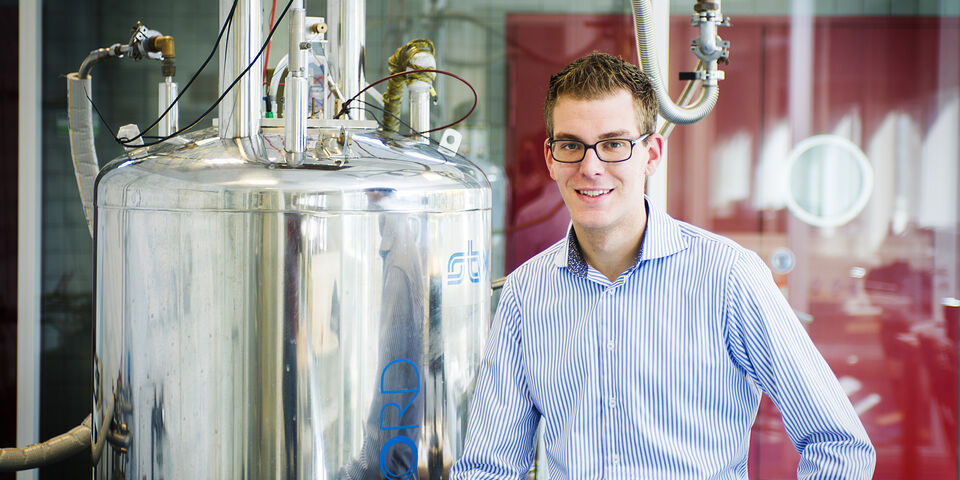Home Stretch | Salt for heating
In principle, a two-cubic-meter block of salt can hold enough energy to heat your house during the whole winter: if you add water to a dry salt, heat is generated. Doctoral candidate Pim Donkers researched in the Darcy Lab how that process works exactly, and which salt is the best one to be used for this thermochemical heat storage.
The principle is perfectly simple: use the heat of the sun to make all the water evaporate from a sizeable chunk of salt. In that way solar heat is captured in the salt in a process called dehydration. “This requires the salt to be heated to a maximum of 150 degrees Celsius”, doctoral candidate Pim Donkers explains. “Which can be achieved very well with a solar panel on your roof.”
When you subsequently need that heat the same night - or only the next winter - you can extract it from the salt by exposing this to humid air. When water molecules lodge themselves among the salt crystals, this releases energy in the form of heat. In principle, as the doctoral candidate at Applied Physics elucidates, you thereby create an infinite cycle of dehydration and hydration, so that you can temporarily store sustainably generated energy in an environmentally sound manner.
Of course, practice proves to be more unmanageable. “We come across the same problem as with the battery of your mobile phone: in the beginning it lasts you for days, but only a few hours after a year. Similarly, the salts that we have tested turn out to degenerate, as it were.” By means of the MRI detectors of the TU/e’s Darcy Lab Donkers could see in detail how the water molecules lodge themselves among the salt particles, and how when heated they wrestle free from the salt crystal again.
“At first instance we researched sulfate salts in particular, as they are cheap. However, it actually proves to be very difficult to make those absorb water fast enough. You go through various phase transitions, from one to two and more water molecules per sulfate molecule. And problems and delays occur upon each and every one of those transitions. And the less water you get into the salt, the less heat you can later extract from it.”
Copper chloride, another type of salt, does not have those problems. “That is much more expensive, though. To heat a house you need about two cubic meters of salt. If you decide on copper chloride, that would cost you tens of thousands of euros, which is not profitable.” Nevertheless the physics engineer sees a future for thermochemical heat storage. “You can put the salt into a porous material, which should help in principle. Or you could mix several types of salt. Whereas sulfates do not absorb water readily enough, chlorides do this very well indeed. So a combination could work quite well.”
The future will tell whether our central heating boiler will in time be replaced by a block of salt. Indeed: the pilot project carried out by Donkers is going to get a sequel; over the coming years four new doctoral candidates will get going with this in the Darcy Lab.


Discussion